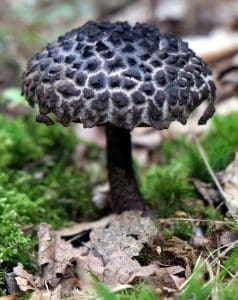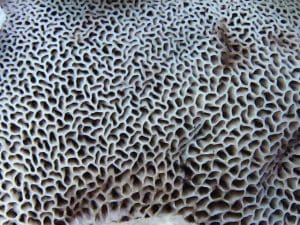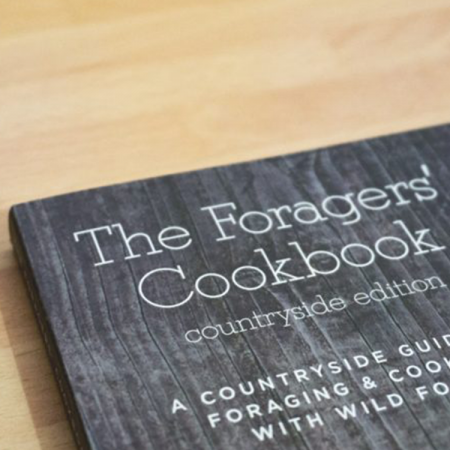Through this peice we’re going to take a deep dive into the identification of the Old Man of the Woods Mushroom, including edibility, lookalikes and more.
The Old Man of the Woods (Strobilomyces floccopus) is a fascinating fungus that stands out not only for its peculiar appearance but also for its ecological significance and culinary potential. With its dark, shaggy cap and distinctive texture, this mushroom has captured the curiosity of mycologists and foragers alike.
In this blog post, we’ll delve into the world of the Old Man of the Woods, exploring its identifying features, habitat, and the role it plays in nature. Whether you’re an avid mushroom hunter or simply a nature enthusiast, join us as we uncover the secrets of this mysterious forest dweller.
Scientific Name
Strobilomyces strobilaceus
Common names
Old man of the woods
Family
Boletaceae
Habitat for Old Man of the Woods Mushroom
Mycorrhizal, meaning it has a symbiosis with trees, So you will find this mushroom in woodland primarily of hardwood trees especially oak and occasionally conifers. The fruit bodies will grow directly from the ground and never off wood or stumps.
Summer to autumn
A rare find in the UK, more common in Europe can also be found in the US and Japan
Description
This interestingly scruffy looking bolete may easily be mistaken for a pine cone on passing by, in fact the name Strobilomyces comes from an ancient Greek word strobilos, meaning a pine cone.
Grow singularity or in small groups, not seen in massive numbers.

Identifying Features of Old Man of the woods Mushroom
Cap:
6-12 cm across but has on the rare occasion been 20cm.
Convex then flatter with age. Covered in upward dark grey/ black scales that start wooly and harden with age. The scales can hang down slightly past the cap margin in an untidy fashion.
Stem:
The stem (stipe) 8-12cm and 1-2 cm wide. Even width along the stem
No volva
Similar in texture and colour as the cap-Grey covered in wooly scales

Underside (fertile)
This is a polypore fungi- 100s of Pores ( holes) on the underside of the cap. Pores are large and pale grey turning black when bruised
On very young specimens you will see a wooly veil covering the pores that breaks aways leaving these wooly shaggy fibres attached to the cap margin.

Flesh
White at first staining an iodine like red when exposed to air then ageing black.
Smell:
Not distinctive
Spores:
black
Uses of Old Man of the Woods Mushroom
In food
Considered edible, not a prize but passable. Insubstantial given its scarce occurrence. Any fungi that’s rare is best left for looking rather than cooking, exceptions can be made for certain species found in a hotspot of large quantity.
Known hazards
None known
Potential lookalikes for Old Man of the Woods Mushroom
Nothing similar in the UK when both the cap, polypore underside and red staining are compared. The shaggy parasol has a very similar cap and red staining but it will be obvious it’s different once you take a glance at the underside as it has gills.
Sources
https://www.first-nature.com/fungi/strobilomyces-strobilaceus.php





